More iPhone 13 Pro Max Astrophotography,
Asteroid 6398 Timhunter
Posted: 28 October 2021
Tuesday morning, 26 October 2021, it rained (0.22"). The sky cleared mid-day but the wind continued. Wednesday, 27 October, was clear and calm.
On my last session I did some initial iPhone 13 Pro Max astrophotography. In my report I noted some issues with reflections of the LiDAR sensor from the eyepiece glass. I made a small cover from black paper and tried to tape it to the iPhone. Unfortunately, the tape would not adhere to the back surface of the iPhone. I selected two alternative ways to hold the cover in place: a rubberband and the clip from an old smartphone clip-on lens.
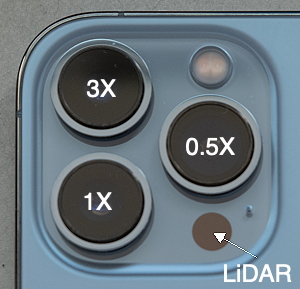
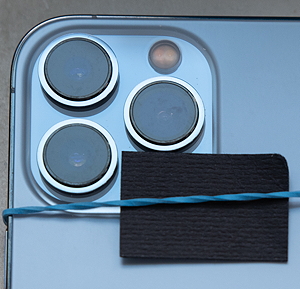
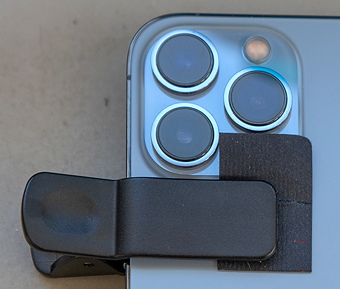
I tested the cover this session in the observatory. It may only be a temporary solution, but is a good proof-of-concept.
|
Open: Wednesday, 27 October 2021, 1808 MST Temperature: 70°F |
Session: 1682 Conditions: Clear |
Equipment:
12" f/8 LX600 w/StarLock
2" 24mm UWA eyepiece
2" 30mm eyepiece
Camera:
iPhone 13 Pro Max
D850 DSLR
1813 MST: Dome Cover OFF.
1819 MST: LX600 ON, StarLock OFF, High Precision OFF.
Viewed Venus, Saturn, and then Jupiter, 102X.
Viewed M17 (Swan Nebula), 102X and 81X.
1833 MST: mounted the iPhone 13 Pro Max on a camera tripod (non-tracking) using the Levenhuk adapter. I tried using an old clip-on 8X telephoto lens with the iPhone 13 Pro Max, but the clip-on did not hold the lens in a stable position due to the design of the "camera bump".
Using the 3X lens and the iOS Camera app (in Night Mode, 30 seconds), took these photographs of the Andromeda Galaxy (M31) and then the Double Cluster (open star clusters).


I then mounted the iPhone 13 Pro Max on a 2" 30mm eyepiece using the Levenhuk adapter to test the LiDAR sensor cover.
1922 MST: StarLock ON.
Took these StarLock autoguided photographs of M16 (Eagle Nebula) and M17 (Swan Nebula) with the rubberbanded cover using the iOS app NightCap Camera (Long Exposure, Light Boost, ISO 32000, 1sec, 1 minute, 1X lens).

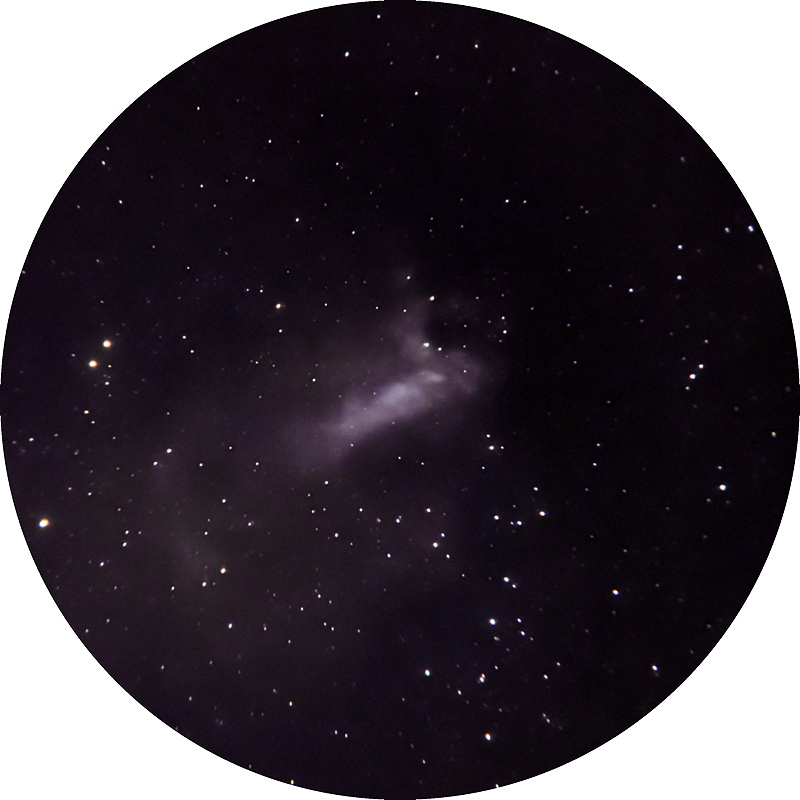
These StarLock autoguided photographs of M16 (Eagle Nebula) and M17 (Swan Nebula) with the clip-on-ed cover were taken using the iOS app NightCap Camera (Long Exposure, Light Boost, ISO 32000, 1sec, 1 minute, 1X lens).


1940 MST: StarLock OFF.
The nebulae were low in the southwestern sky so imaging was not ideal, but the cover was effective at blocking most of the light from the LiDAR sensor, unlike what I saw without a cover on the previous session. The clip-on held the cover more securely in place and it was tighter against the sensor port. I will continue to use the clip-on cover for iPhone 13 Pro Max afocal astrophotography.
SYNCed on the star Fomalhaut in preparation of DSLR imaging.
Slewed to the coordinates of Asteroid 6398 Timhunter, Mag. +18.1, named for Tim Hunter, co-founder of the International Dark-Sky Association. Tim visited my observatory in September 2021. The asteroid was too low in the southeastern sky for imaging.
While waiting for Asteroid Timhunter to rise higher, I prepared the D850 DSLR for imaging.
2008-2028 MST: took a short break from the observatory.
2030 MST: mounted the D850 DSLR at prime focus + focal reducer, focused on Fomalhaut, and locked the 12" mirror.
2050 MST: Wi-Fi ON.
Used SkySafari 6 Pro on the iPhone 13 Pro Max to GOTO Asteroid Timhunter.
2052 MST: Wi-Fi OFF, StarLock ON.
2055 MST and 2155 MST: took StarLock autoguided images of Asteroid 6398 Timhunter, 5 minutes exposures, ISO 6400.
Between taking the two asteroid images, I photographed M45 (the Pleiades) with the iPhone 13 Pro Max mounted on the camera tripod (non-tracking).
Camera app (Night Mode, 5 seconds, 3X lens)

NightCap Camera app (Long Exposure, Light Boost, ISO 10752, 20 seconds, 3X lens)

2200 MST: StarLock OFF.
Seeing had deteriorated by the time I took the second asteroid. But I did capture the Mag. +18.1 Asteroid 6398 Timhunter, as seen here in these images cropped from the full-frame images.

Mouseover or tap on image for label

I fell in love with asteroids as an undergraduate astrophysics student at Indiana University. In 1966, as a freshman, I worked on the IU Asteroid Program. I was on the Program for four years and even worked there full-time during the summer after graduation in 1970. I would measure star and asteroid positions on 8x10 inch photographic glass plates using the Gaertner Measuring Engine.
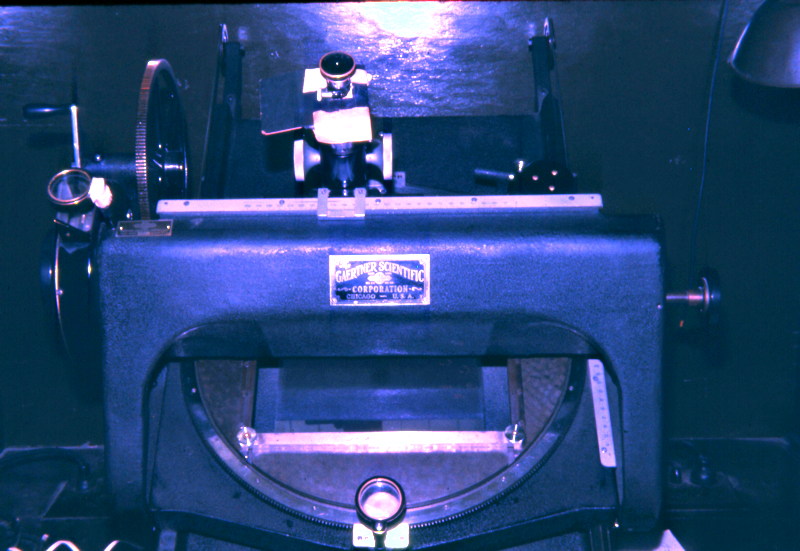
The plates were taken using one of the telescopes at Goethe Link Observatory, which was operated by IU at the time. I visited the Observatory only once as a student and that was a very short visit.
Photographing asteroids that are named for people I know and places that have meaning to me is a passion of mine. See my Asteroids & Dwarf Planets album.
I stepped outside of the observatory and took this handheld iPhone 13 Pro Max photo using the Camera app (Night Mode, 3 seconds, 0.5X lens).

2210 MST: LX600 OFF.
2219 MST: took a Sky Quality reading and reported the result to Globe at Night.
|
Close: Wednesday, 27 October 2021, 2224 MST Temperature: 50°F |
Session Length: 4h 16m Conditions: Clear, SQM 21.08 |
Comments are welcome using Email. Twitter users can use the button below to tweet this report to their followers. Thanks.
Cassiopeia Observatory Home Page
Copyright ©2021 Michael L. Weasner / mweasner@me.com
URL = http://www.weasner.com/co/Reports/2021/10/28/index.html
